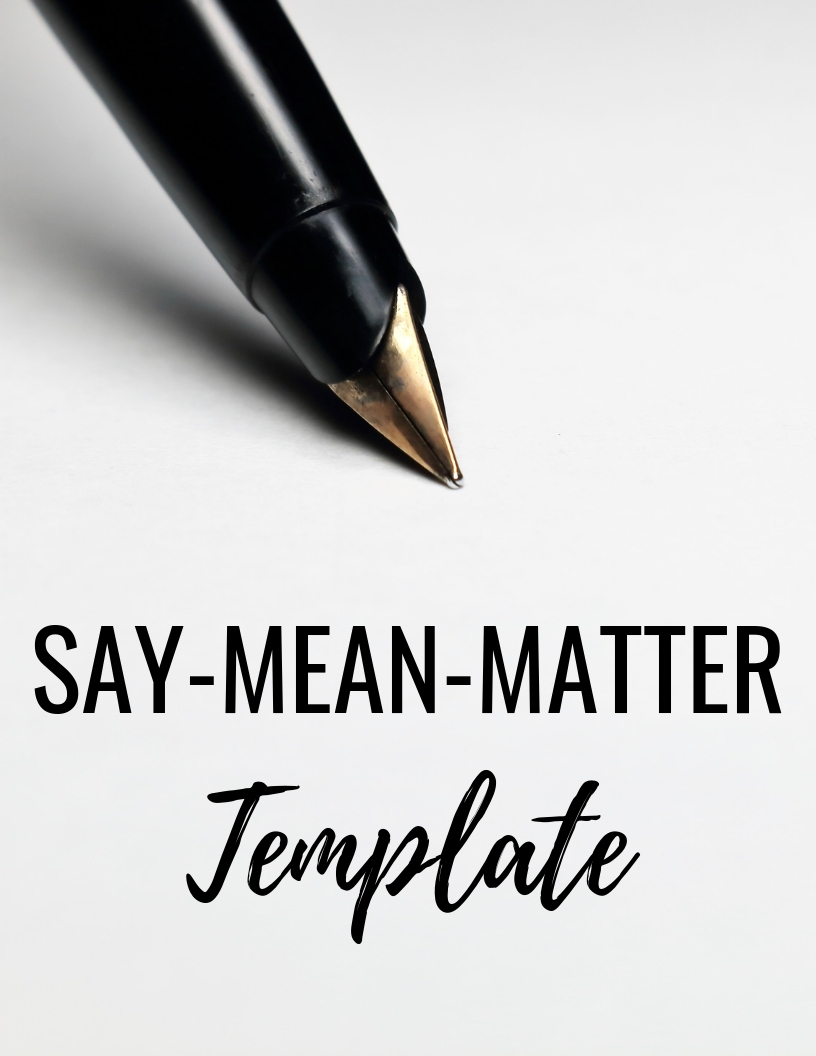The SAY-MEAN-MATTER strategy for text analysis comes from Kelly Gallagher’s book Deeper Reading: Comprehending Challenging Texts. This is a strategy that I use in my Advanced Placement classes, but it can be used at any level and grade level.
Here’s How it Works
Students respond to a piece of textual evidence— either teacher-selected or student-selected. Students respond to three prompts, like questions, to the piece of evidence in order to analyze it and connect it to a larger, thematic idea. This method is also called “Three Questions.”
Students complete the “SAY” portion first. For the “SAY” portion, students simply give plot points in 2-3 sentences about the piece of textual evidence. They don’t do any analysis but simply identify where the evidence comes from in the text.
The second prompt is the “MEAN” section. This is the most important part of the strategy because it is where students analyze the evidence, going beyond the obvious, and analyzing what is implied by the evidence. This is by far always the most difficult portion of this strategy— but also in literary analysis in general. Students should anticipate to write 4-8 sentences analyzing the piece of evidence. They can discuss literary elements and techniques such as symbolism, imagery, diction, characterization, etc.
The third portion is the “MATTER” portion in which students connect the evidence to a thematic claim. Think of this portion as the “thesis” or “topic sentence” part of the exercise. Students essentially state what the evidence proves.
That’s it! I typically give my students textual evidence at first and then later on have them select their own textual evidence to take through the three prompts.
A Twist on SAY-MEAN-MATTER
As much as I love this strategy, I do see an inherent flaw in it that causes confusion among students, so I have adapted the strategy so that it is more logical. The flaw is this: it is difficult for students to explain evidence when they do not know what they are first proving. Therefore, I have adapted this strategy so that it makes more sense from an argumentation point of view. So, I reordered the strategy so that it reads:
MATTER-SAY-MEAN
This order has students beginning with an argumentative thematic claim that helps to focus their analysis. The whole point of analysis is to explain how textual evidence proves an argument. Beginning with analysis without a focused direction leaves students confused on what they are supposed to explain. To further refine this idea, technically, I would like for it be: MATTER-SAY-MEAN-MATTER so that the student begins and ends with the argument to essentially form a coherent, focused paragraph supported by textual evidence with analysis.
Any way you decide to use Kelly Gallagher’s strategy is an effective tool to help students take their analysis to a deeper level. Give it a try and see which format you like best!
Related FREEBIE:
About the Author
Meredith is the founder and creator of TeachWriting.org and Bespoke ELA. She has taught high school English for 10+ years in Dallas, Chicago, and New York City and holds a M.A. in Literature from Northwestern University. She has always had a connection to the written word-- through songwriting, screenplay writing, and essay writing-- and she enjoys the process of teaching students how to express their ideas. An avid tea drinker and anglophile, Meredith enjoys life with her husband, daughter, and sweet pups.





